
CBSE Class 11 Maths Notes Chapter 5: CBSE Class 11 Maths Notes Chapter 5 our knowledgeable instructors prepare complex numbers and quadratic equations.
This CBSE Class 11 Maths Notes Chapter 5 aids students in finding fast, precise, and effective solutions to problems. Additionally, we offer step-by-step solutions for every NCERT problem, guaranteeing that students comprehend them and ace their tests.CBSE Class 11 Maths Notes Chapter 5 Overview
Several important mathematical theorems and formulas are included in this class 11 revision note for Maths chapter 5 on complex numbers and quadratic equations. To cover all of these topics, the NCERT textbook includes a ton of practice questions that will make it easier for students to understand greater concepts in the future. We offer answers to all of these issues by outlining each step with appropriate justifications. This specific set of NCERT chapter 5 class 11 maths study notes is intended to assist students who want to pass their maths examinations even at the last minute.CBSE Class 11 Maths Notes Chapter 5 PDF
Here we have provided CBSE Class 11 Maths Notes Chapter 5 pdf for the students so that they can easily use these notes by downloading them without the internet. These notes will help students in better revision of the chapter.CBSE Class 11 Maths Notes Chapter 5 PDF
CBSE Class 11 Maths Notes Chapter 5
What is a Complex Number?
A complex number is represented by the notation a + ib, where "b" is an imaginary number and "a" is a real number. The complex number that guarantees i2 = −1 is made up of the symbol "i." One-dimensional number lines are added to represent complex numbers. A complex number in a complex plane is typically represented as the point (a, b), and can be written as a + bi. We must understand that a complex number, like i, -5i, etc., that has no real part is referred to as being wholly imaginary. Furthermore, a real number is a complex number that has no imaginary component at all. Re(Z) = x and Im(Z) = y are the real and imaginary parts of a complex number, respectively, where x and y are real integers. A complex number is defined as several type x + iy.Properties of Complex Numbers
Below is a list of a complex number's characteristics: If a + ib = 0, then a = 0, and b = 0 are two real numbers. If a + ib = c + id holds for the real numbers a, b, and c, then a = c and b = d. Z1, Z2, and Z3 are a set of three complex numbers that satisfy the distributive, associative, and commutative laws. Complex numbers are conjugate to each other if the product and sum of any two given complex numbers are both real. Regarding the two complex numbers, z1 and z2, we have |z1 + z2| ≤ |z1| + |z2|. Any two conjugate complex numbers always add up to a real number. Any two conjugate complex numbers always have a real product.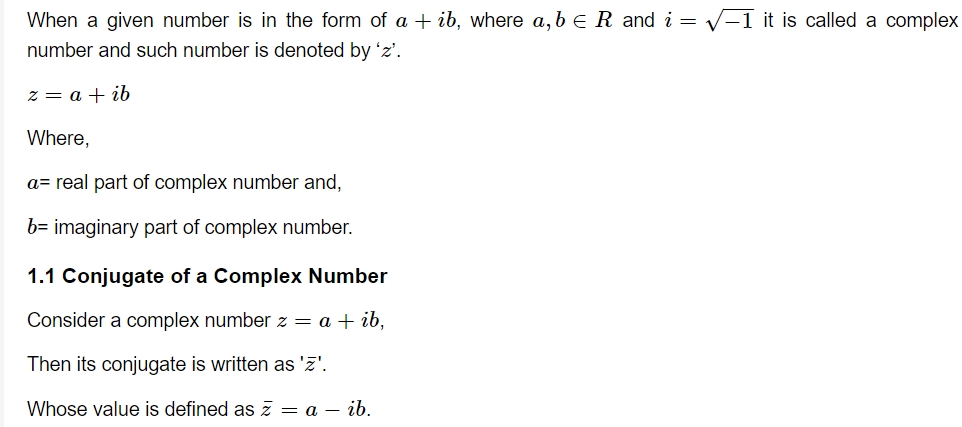
Algebra of Complex Numbers
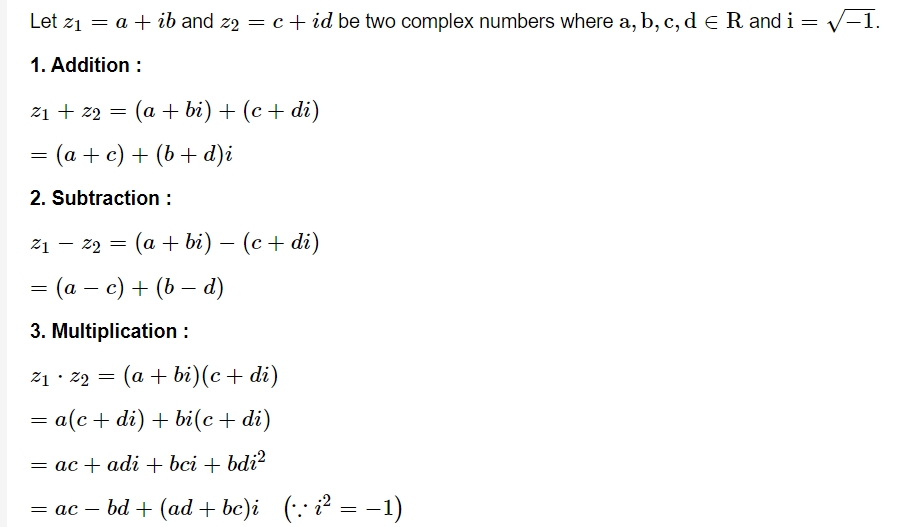
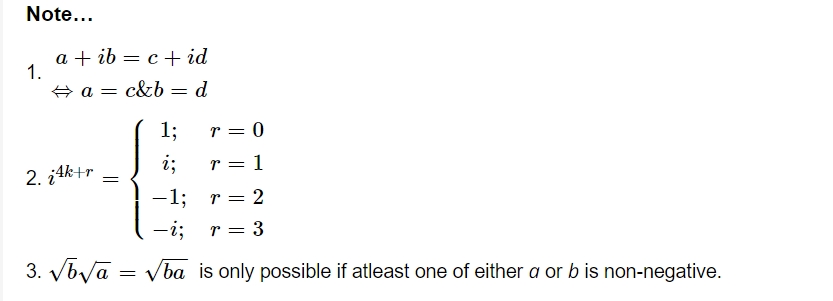
Argand Plane
Modulus and Argument of Complex Number

Principal Argument

Polar Form
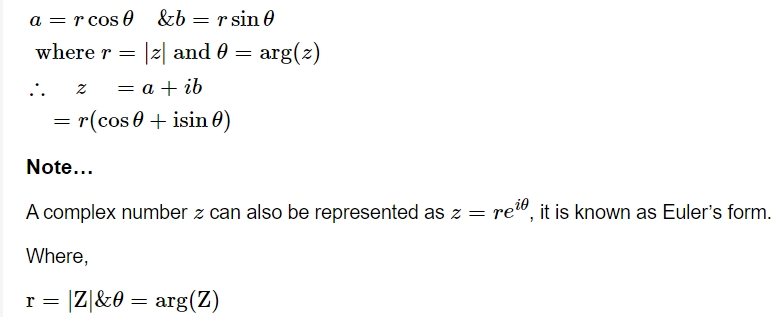
Some Important Properties
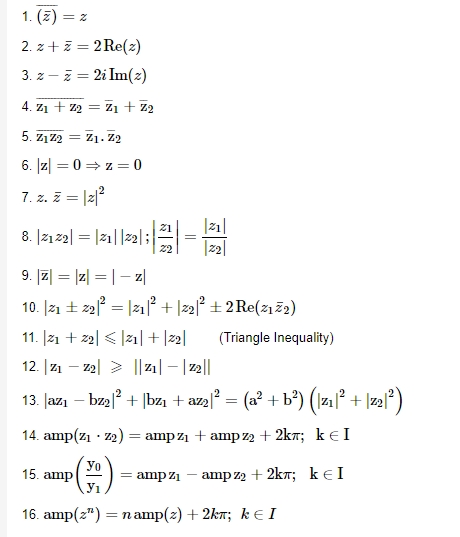
De-Moivre's Theorem

Cube Root of Unity

LOCI in Complex Plane
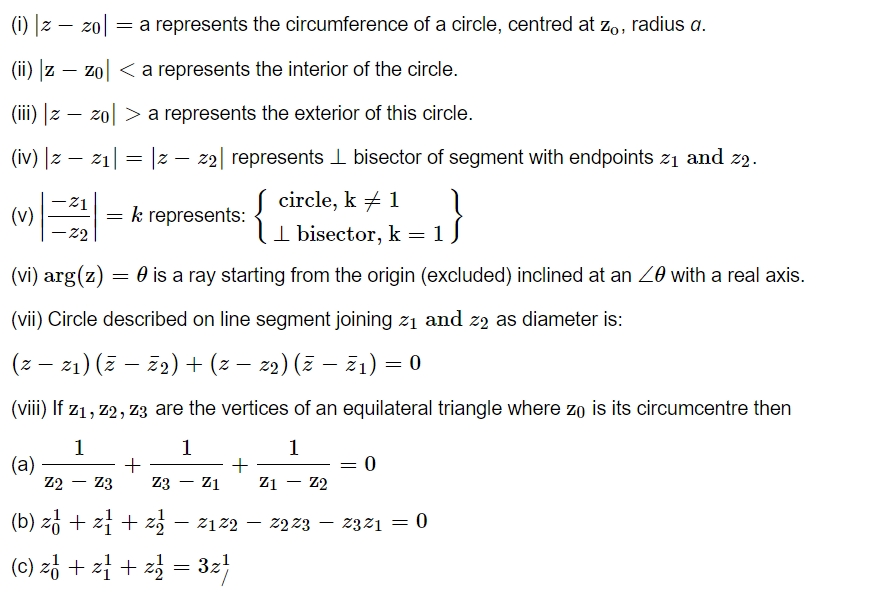
Important Identities
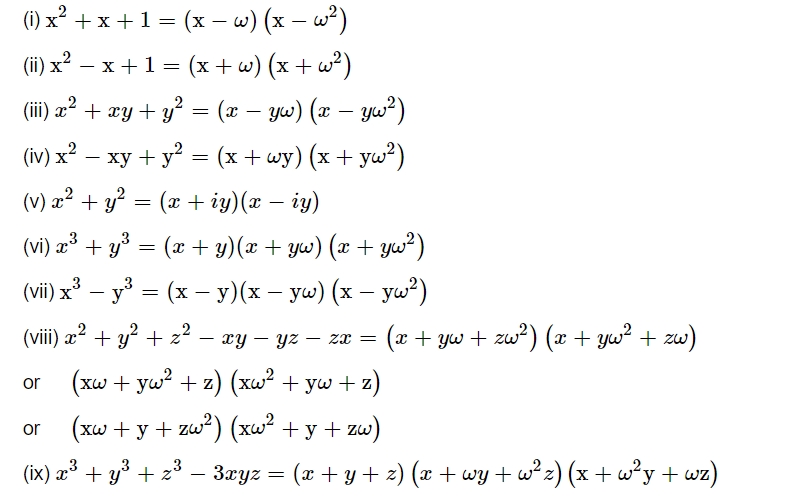
Roots of Quadratic Equation
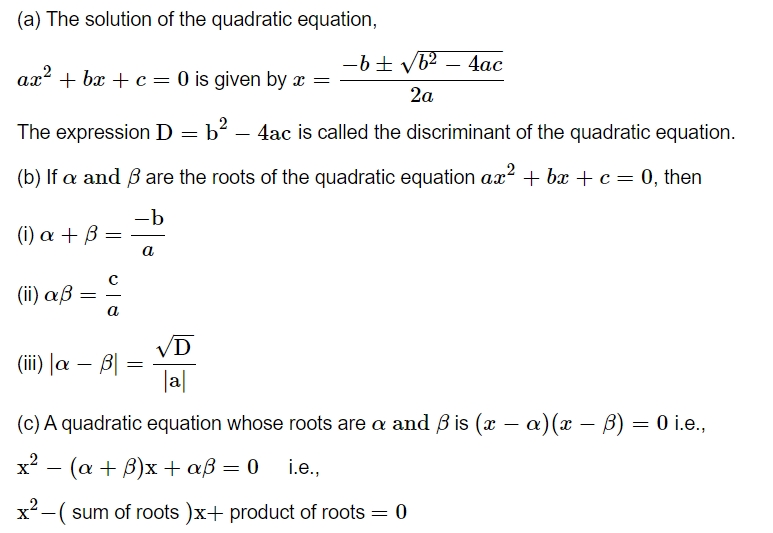
Particular Cases
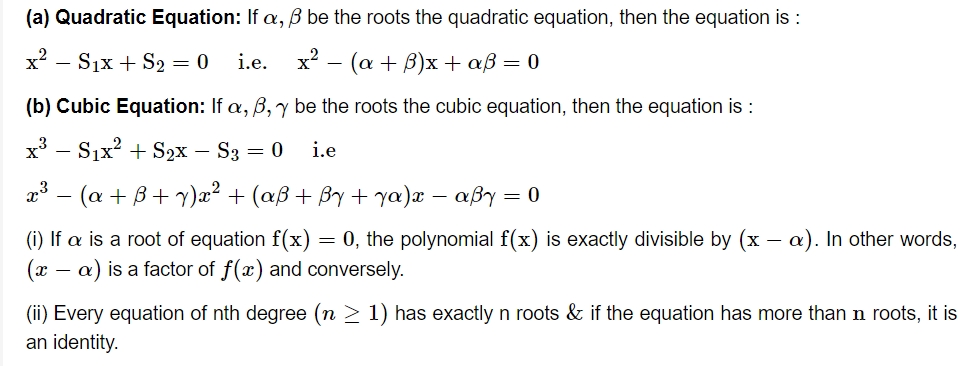
Only One Common Root

Transformation of Equations

Benefits of CBSE Class 11 Maths Notes Chapter 5
We have produced all of the review notes for class 11 Maths chapter 5 in compliance with the most recent CBSE syllabus to ensure that any changes made by the CBSE board are understood. Teachers with extensive expertise and a thorough understanding of the material have created the Chapter 5 class 11 mathematics revision notes for complex numbers and quadratic equations. Additionally, chapter-by-chapter Mathematics Revision Notes with brief overviews will be shown to students, which may help them with their preparation. The class 11 maths chapter 5 revision notes from CBSE are written succinctly using the most recent book editions. Students can easily refer to the PDF-formatted CBSE Class 11 Maths Chapter 5 revision notes for complex numbers and quadratic equations anytime they need to, according to us. These class 11 maths chapter 5 review notes are the result of teachers carefully combing over the previous ten years' exam papers and then removing them. It gets tough for the students to keep up with everything because most books contain a lot of content. One useful resource for simpler study techniques is the Maths chapter 5 revision notes for class 11.CBSE Class 11 Maths Notes Chapter 5 FAQs
Which is the hardest chapter in maths class 11 CBSE?
Circle, Parabola and Permutation and Combination are tough chapters of Class 11 Maths.
Which is the most scoring chapter in class 11 maths?
Sets: It all begins with Sets - understanding what a set is, the types of sets, and set operations.
How can i pass 11th maths?
Solve each and every sum from your math textbook. Make a separate book to write each formula you come across in your textbook. Solve daily, practice daily. Revise the formula book before the exams.
🔥 Trending Blogs
Talk to a counsellorHave doubts? Our support team will be happy to assist you!

Free Learning Resources
PW Books
Notes (Class 10-12)
PW Study Materials
Notes (Class 6-9)
Ncert Solutions
Govt Exams
Class 6th to 12th Online Courses
Govt Job Exams Courses
UPSC Coaching
Defence Exam Coaching
Gate Exam Coaching
Other Exams
Know about Physics Wallah
Physics Wallah is an Indian edtech platform that provides accessible & comprehensive learning experiences to students from Class 6th to postgraduate level. We also provide extensive NCERT solutions, sample paper, NEET, JEE Mains, BITSAT previous year papers & more such resources to students. Physics Wallah also caters to over 3.5 million registered students and over 78 lakh+ Youtube subscribers with 4.8 rating on its app.
We Stand Out because
We provide students with intensive courses with India’s qualified & experienced faculties & mentors. PW strives to make the learning experience comprehensive and accessible for students of all sections of society. We believe in empowering every single student who couldn't dream of a good career in engineering and medical field earlier.
Our Key Focus Areas
Physics Wallah's main focus is to make the learning experience as economical as possible for all students. With our affordable courses like Lakshya, Udaan and Arjuna and many others, we have been able to provide a platform for lakhs of aspirants. From providing Chemistry, Maths, Physics formula to giving e-books of eminent authors like RD Sharma, RS Aggarwal and Lakhmir Singh, PW focuses on every single student's need for preparation.
What Makes Us Different
Physics Wallah strives to develop a comprehensive pedagogical structure for students, where they get a state-of-the-art learning experience with study material and resources. Apart from catering students preparing for JEE Mains and NEET, PW also provides study material for each state board like Uttar Pradesh, Bihar, and others
Copyright © 2025 Physicswallah Limited All rights reserved.
Get App









